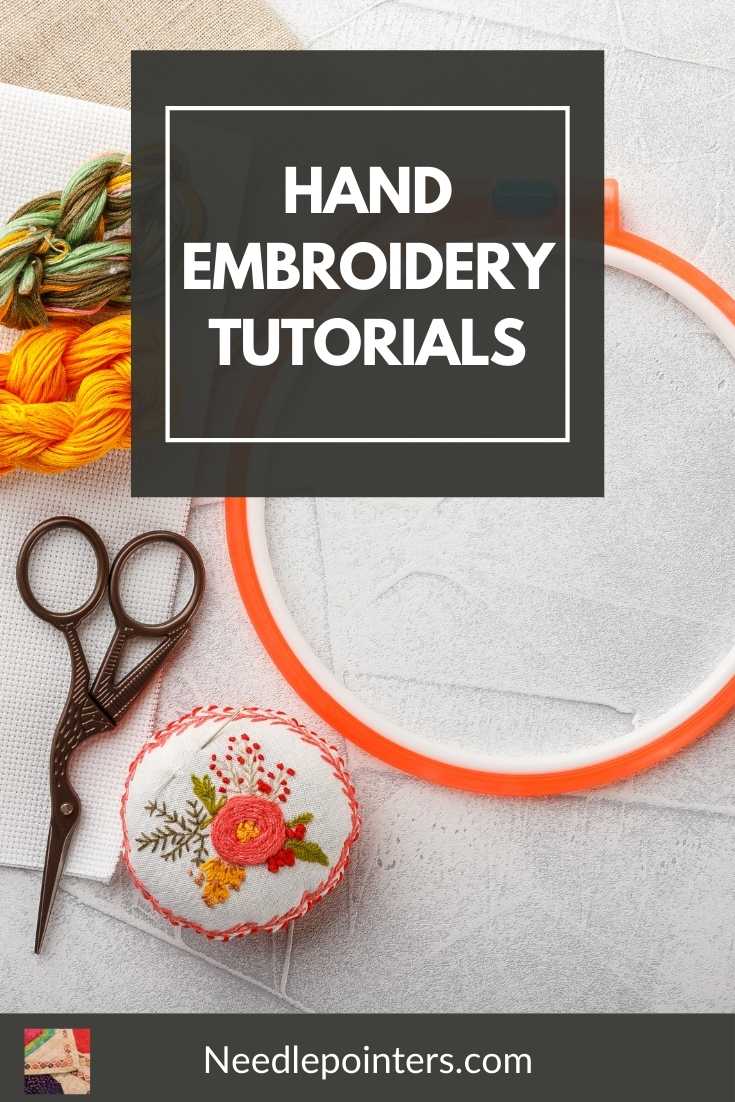The craft of hand-embroidery uses decorative stitches with embroidery floss, needle and thread or yarn, along with a hoop, to make fabric beautiful with the embellishments and ornamentation of these stitches. Whew! That is quite a formal definition. Keep reading to learn about this needle craft.
History of hand Embroidery
The word embroidery comes from the French word “broderie”. Broderie means embellishment. And that is exactly what we are going to show you; how to embellish fabric by hand.
It is amazing to learn that the earliest signs of embroidery can be traced back to 30,000 BC from the archaeological finds of what remains of decorated clothing of the Cro-Magnon period. We have so much to guide you along the path of embroidery; an art that dates back tens of thousands of years ago!
In 1000 AD, embroidery made its way to Europe as the Christian Church grew. Royalty and wealth in Europe was often demonstrated by exquisitely embroidered tablecloths and wall hangings, as well as embellishments on the clothing of the rich and powerful of that time period.
Around the 18th century in England, wealthy mothers taught their daughters the art of embroidery.
This was a mandatory lesson in wealthy households, and as a young lady's embroidery skills reached a point of excellency, she was considered a woman.
Embroidery continued to show high social status, as women and young girls in poor communities didn’t have the time or supplies for this leisurely pastime. It was truly a privilege of the upper class.
During the industrial revolution, the embroidery machine was invented and embroidered items were easily purchased by those with the money to do so.
Embroidery Today
Hand embroidery is an art still today and uses the same fundamental stitches as in the past, such as the running stitch, chain stitch, satin stitch, blanket stitch, and cross-stitch. We have great links to video tutorials of these stitches below!
Learning embroidery is not difficult and is actually quite inexpensive. The main supplies are a needle, embroidery floss, an embroidery hoop, and fabric.
Check out the link below to learn more about embroidery notions, how to use them, and my favorite; how to separate embroidery floss
Although patterns are widely available, many stitchers enjoy creating their own patterns and designs. If you are interested in this, our page has links to patterns and instructions on how to transfer them to your fabric.
Home embroidery machines have also become very popular. Embroidery machines are computerized and produce a much different embroidery look from more laborious hand embroidery. We have great resources for machine embroidery on our site as well.
Both hand embroidery and machine embroidery have the same purpose; to embellish and decorate fabric for clothing and household items such as tablecloths, towels, sheets and pillows.
Time to get your BRODERIE on!
Enjoy!!

Supporting Products and links: Some of the links below may be affiliate links.
We make a small commission on sales through the affiliate links, at no extra cost to you. Thank you in advance
for your purchase and your support! Please see our full Affiliate
Statement for more information.
|
A comprehensive dictionary offering more than 400 stitches.
by Mary Thomas
- Paperback
- Published 1998
Affiliate Link to Amazon
|
|
More Categories Below
Click the links below to find more projects in those categories.
Explore all of the wonderful embroidery basics and essentials for beginners with great tips for all who love to embroider.
Video tutorial on how to embroider.
Embellish you embroidery projects with cording, tassels, etc.
Hand embroidery…that lovely and fine art of making decorative stitches on fabric with a needle and thread! Find vintage and modern free hand embroidery designs, including many free flower embroidery patterns plus so much more!
Find excellent tutorials of hand embroidery stitches, from the basics of the chain stitch, to the more advanced stitches such as the double herringbone stitch.
Sashiko stitching is a Japanese form of embroidery used as a decorative reinforcement stitching.